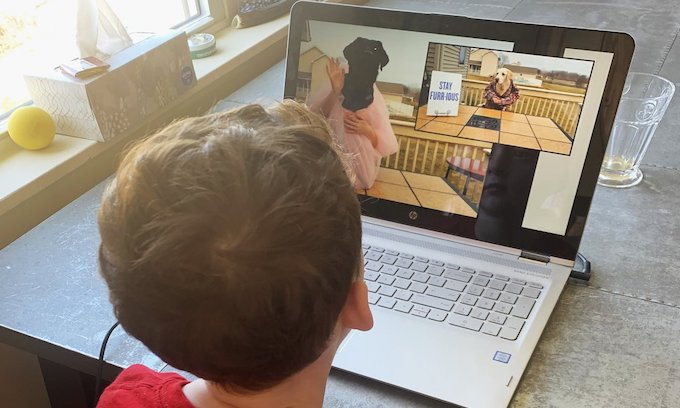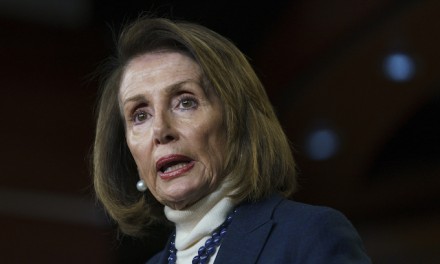Rita Markstein was logging her first grader onto his Zoom classroom last October when she immediately realized she had made a mistake. Markstein, who teaches at Sacramento State’s College of Education, accidentally logged her son into one of her own meetings.
“He started crying, thinking he has an art class,” Markstein said. “That was the trigger point. I realized I couldn’t adequately teach my child at the same time I was expected to work.”
Markstein removed her son, Joseph, from his San Juan Unified elementary school and enrolled him into Saint Philomene School, a Catholic School in the Arden Arcade area. It was a difficult decision.
Nearly a year after schools closed campuses, most of Sacramento County’s 250,000 students are still attending school via distance learning, all while thousands of students in neighboring counties managed to return to in-person instruction months ago.
Many parents have hit a wall. And like Markstein, whose husband works outside the home, many are pulling their children out of public schools and placing them in local private schools where in-person instruction is available. More than 40 private schools in Sacramento County reopened under the state’s waiver program in recent months, including 16 in the Catholic Diocese.
“I am a true believer in public education,” Markstein said. She taught in the Sacramento City Unified School District for 15 years. “But he missed being around other kids, he missed the structure. I had the realization that I was failing both at my job and as an educator for my child. As a parent, I realized I couldn’t do it all.”
It’s unclear precisely how many children are making the move, but school districts across the Sacramento region have seen dips in enrollment. San Juan Unified is serving 484 fewer students than it did in the 2019-2020 school year. Sacramento City Unified’s enrollment is down 1,556 students since last school year, including a decline of 600 kindergartners.
While many factors contribute to students leaving districts — including family relocations — it is clear interest in private schools is on the rise.
Decision for leaving public schools
Parents transfer their children to private schools for many reasons: work obligations that make remote learning difficult, frustrations with the effectiveness of distance learning and a lack of faith in the public school system during the pandemic.
While Folsom Cordova Unified reopened elementary campuses for in-person learning in November, the short school days and four-day hybrid schedule made it difficult for many parents.
Folsom Cordova served 21,029 students in the 2019-2020 school year. This school year, enrollment stands at 19,758. It’s unclear how many students left the district for private schools, but there is no shortage of private schools in Folsom and El Dorado Hills — many of which are seeing an influx of new students.
Heather Wright turned to Folsom Preparatory School after she exhausted all other options. Wright, who is in the military, and her husband, a nurse, were frantic. Wright said she became angry that schools did not focus enough on working parents.
“To go from limited daycare costs to full-time daycare on a budget can be ruinous,” she said. “We were bouncing my son around from relative to relative during the summer, but it wasn’t a viable solution once school started.”
She felt the message from public schools was: “You’re essential, but let’s not make sure that your kids are taken care of.”
Wright pulled $11,000 out of her retirement to cover a year of private school tuition for her 10-year-old son. Monthly tuition is $1,100 per month; a nanny would have cost $3,000 a month.
“We were scrambling trying to find a place for our son,” Wright said. “My husband and I are grateful to have jobs and be able to put our son in school when so many people are struggling.”
Her son attends school in-person everyday at his new school. Folsom Cordova Unified began offering childcare in the fall, but by then, Wright said it was too late.
Folsom Preparatory administrators said they have seen an increase in enrollment and that they have a wait list for three of their classes. They are near capacity and opened a new classroom at the start of the school year.
When the pandemic hit, about 30 families unenrolled their students from the school — a majority of them with kindergarteners.
“On the flip side, that many families called us in a panic to find in-person education for their students in first to fifth grade,” said Head of School Candis Murawski.
Murawski estimates about one third of the 101 students at the Folsom campus registered in the summer of 2020 because distance learning did not work for them last spring. Many were children of essential workers, and some were unsure if their public schools would reopen soon.
Students in grades six through 12 in Folsom Cordova are still doing distance learning and the district plans to reopen secondary campuses once Sacramento County hits the red tier for coronavirus spread risk, which could be several weeks away. So Folsom Preparatory is considering opening a sixth grade classroom in the fall to accommodate families. It’s unclear what public school schedules and COVID-19 safety plans will look like in the fall, and families are concerned their children won’t be able to be in-person when they head to middle school.
Crystal Sanders also enrolled her two children in Folsom Preparatory after what she calls a “horrendous” experience in distance learning.
“It was the best decision I could have made,” she said. “My kids are thriving.”
Her children, a first grader and a fourth grader, left Folsom Cordova Unified before the district returned students to campus. While she knew of the district’s plan to bring elementary aged students back to campus, she said the hybrid schedule wasn’t enough. She said it’s difficult to afford, but it was worth it.
“I had zero faith in their plan and back-to-school schedule,” Sanders said. “The school (teachers) union doesn’t have the kids’ best interests at heart, sadly.”
Already disillusioned with California politics, Sanders felt the prolonged school closures were unnecessary, especially given that many students across the country returned to campuses.
She applied for a job in Austin, Texas. She moves in March. And she’s enrolling her children in a school where they will be attending full day, in-person classes everyday.
“We’re fortunate to have the money,” Wright said. “What about those who didn’t? What did they do? We’re collectively putting ourselves and families at risk and are deprived of a social construct that we rely on.”
Considering Catholic Schools
Not all families turning to private schools have the money for what is often a high tuition bill. Several private schools in the region, particularly those operated through religious organizations, provide generous tuition assistance to applicants.
Catholic schools in the Sacramento area cost parents $6,000 per year for elementary schools and about $14,000 per year for high schools.
Lincoln Snyder, Executive Director and Superintendent of Catholic Schools, said the amount of financial aid offered by the Diocese has gone up significantly. And so has interest.
Overall, enrollment is down in Sacramento-area Catholic schools. Nationwide, enrollment in Roman Catholic schools dropped 6.4% this school year amid the pandemic and financial stresses, according to Catholic education officials. It’s the largest single-year decline the private school system has seen in at least five decades
But local Catholic schools have lower enrollment to help prevent the spread of COVID-19.
When Catholic schools applied to reopen campuses with state waivers, school officials turned students away to reduce classroom capacity and ensure they could maintain physical distancing between students. Classes that once could accommodate 33 students now have 26.
And several schools have wait lists. Going into the pandemic, there were more applications than available seats. Some schools in the Diocese, like Grass Valley’s Mount St. Mary’s Academy, saw enrollment drop at the start of the pandemic, then surge once fall approached and public schools were still closed.
“There is not doubt we received a lot of attention,” Snyder said. “We have gotten a lot of phone calls.”
In fact, Markstein brought six families along with her to St. Philomene from her son’s former school — two from Joseph’s class.
“It was an emotional decision for us, and for my friends,” she said. “Some of my friends were hesitant because it’s a private school. Maybe they aren’t Catholic, or have the money. It’s a layered decision. But sometimes it’s not a decision anymore. Sometimes it’s a sacrifice, and quite a few people feel this. We really loved our school, but you get to your breaking point. You know that something has to change.”
St. Philomene serves students from a wide range of socio-economic backgrounds, and had the diversity that Markstein wanted her son to be surrounded with. Joseph left a dual immersion program in San Juan Unified and is continuing his English and Spanish education at St. Philomene’s dual immersion program.
“That part was so important to us,” she said. “Our kids live in this bubble. I grew up in St. Philomene’s neighborhood, and I know we grew up differently than our kids. I want them to know this is not the reality of life, and that we need to explore neighborhoods outside of our neighborhoods. We like the fact that St. Philomene can offer that, and it’s not what people think is a typical private school.”
Markstein says she plans to keep her son enrolled in St. Philomene after public school campuses reopen. She also recently enrolled her younger son in the school’s transitional kindergarten program.
“(Joseph) adapted so quickly,” she said. “Moving him back will be too much of a tug for him. I miss his school, but we probably won’t go back.”
Students left behind
Private schools are not available to many. At Sacramento Country Day School, for example, tuition ranges between $22,000 and $28,000, though the school does offer $2 million in tuition assistance each year. White students represent about 70% of private school enrollment across the U.S., according to the Civil Rights Project. And students from low-income families account for 9% of private school enrollment, making them largely underrepresented.
And while a few private schools serve students from various racial and socio-economic backgrounds, the pandemic has contributed to a divide between those who are learning in-person and students who remain at home.
“Black, Latinx, Native American, and low-income families are more likely to face barriers that limit the effectiveness of distance learning and are more likely to be impacted by COVID-19,” according to a study from Policy Analysis for California Education (PACE).
Heather Hough, executive director at PACE, said the pandemic has created a myriad of inequities. Some families have been able to pay for nannies and tutors, or form “pandemic pods” that bring small groups of families together. And as students flee public schools, funding for those districts leaves as well.
“We will see an equity gap, and an impact on public education,” Hough said. “Many students don’t have the money to buy a different set of opportunities.”
___
(c)2021 The Sacramento Bee (Sacramento, Calif.)
Visit The Sacramento Bee (Sacramento, Calif.) at www.sacbee.com
Distributed by Tribune Content Agency, LLC.
—-
This content is published through a licensing agreement with Acquire Media using its NewsEdge technology.



















I bet all of the people in the above article vote Democrat and look what you have with a one party system, a communist dictatorship. Gavin Newsom’s kids have been going to private schools, but based on “the science” the public schools are closed, right Gavin, since you base everything on “the science”? Gavin, based on the science, what is that between your communist ears? It surely isn’t a brain!
I wonder, how many signed the recall petition?
And on the bright side, every child taken out of Public Schooling and placed in Private schooling will have years of no socialist indoctrination, and might even be taught that there is a God, and we aren’t him. To such belongeth the kingdom of the remants who can self-govern and survive pandemics, Ice storms, and most important, Liberal rule by government power seekers that elevate party over persons that usually end in “Everyone For Himself” and Women and Children get to the life boats right AFTER the Socialist leaders, real men already been drowned out.
PITY all those parents, are not getting a FULL YEARS rebate on property and school taxes!
So far I have heard of one city in Illinois that is giving taxpaying citizens a rebate of $2,000,000.00 total outt of what they saved with closed schools.
Biden wants to give schools (Teacher’s Unions) billions MORE after they have been closed for a year!
IMO ANY district not doing so, needs to have their council HQ, INVADED BY the people of that district, DEMANDING TO KNOW WHY..
“While many factors contribute to students leaving districts — including family relocations — …..”
Sub-par governance is the single most influential factor. Family relocation is a symptom of severe administrative illness. It is NOT a cause factor.